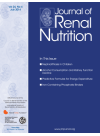Dietary Reduction of Advanced Glycation End Products: An Opportunity for Improved Nutrition Care
Advanced glycation end products (AGEs), also known as glycotoxins, are formed both exogenously and endogenously. The Maillard reaction is an exogenous, nonenzymatic process which occurs between sugars and a free amino group of proteins, lipids, or nucleic acids when they are heat treated, resulting in AGE formation.1 The reaction contributes to the flavor, color, and aroma of food. A portion of food-derived AGEs are intestinally absorbed, accumulating in cells and tissues.2 Many types of AGEs exist, and a common dietary AGE, carboxymethyllysine is a biomarker for protein damage.



